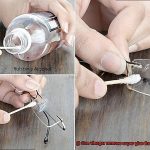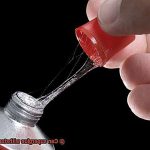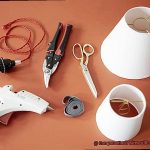Have you ever experienced the sinking feeling of watching water infiltrate your cherished possessions? Whether it’s a soggy phone or a leaky water bottle, water damage can be a real downer. But fear not. There might be an answer to this problem. Have you ever considered using super glue to make waterproof?
Super glue is a popular adhesive that DIY enthusiasts swear by for its quick-drying and strong bonding capabilities. However, can it also shield items from moisture damage? Many people believe that super glue creates a waterproof seal, but is this really the case?
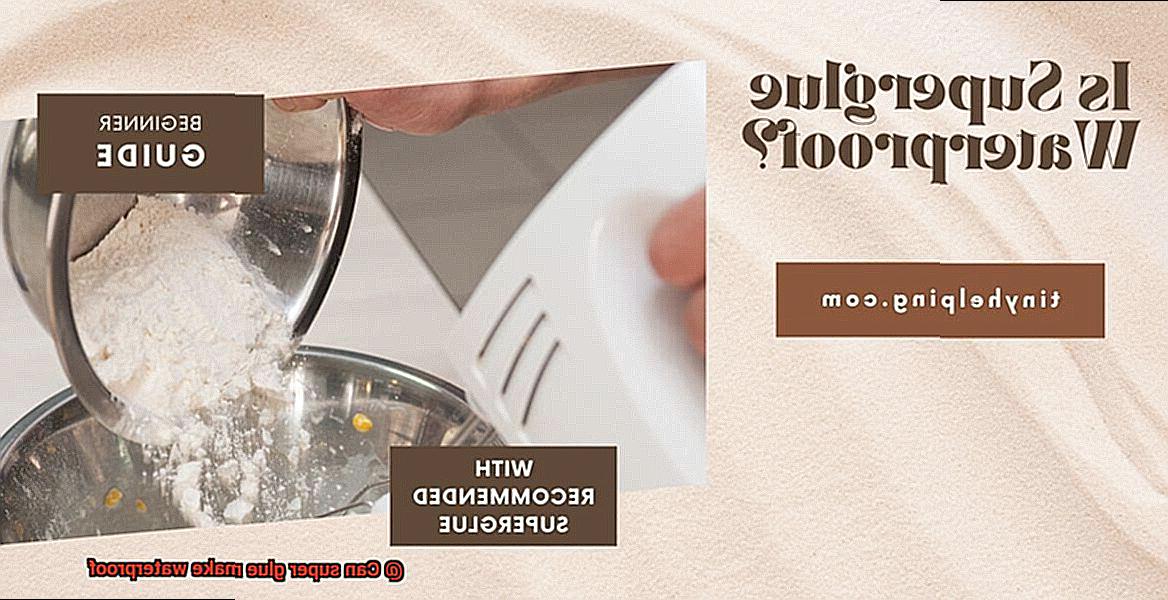
In this article, we’ll take a closer look at whether or not super glue can make waterproof. We’ll explore the science behind super glue and how it functions, as well as assess its effectiveness in various situations. From sealing tiny cracks to fixing outdoor equipment, we’ve got everything you need to know about using super glue to safeguard your belongings from water damage. So let’s dive in and see if super glue is truly the hero we need to keep our items safe and dry.
What is Super Glue?
Contents
- 1 What is Super Glue?
- 2 Types of Super Glue
- 3 Does Super Glue Make Items Waterproof?
- 4 Factors That Affect the Waterproofing Ability of Super Glue
- 5 How to Apply Super Glue for Maximum Waterproofing
- 6 Benefits of Using Super Glue for Waterproofing
- 7 Disadvantages of Using Super Glue for Waterproofing
- 8 Alternatives to Using Super Glue for Waterproofing
- 9 Conclusion
Super Glue, the quick-fix adhesive known for its strong bonding properties, has become a household name. The glue is made from a chemical called cyanoacrylate, which reacts with moisture to harden within seconds. This fast-acting property has made it an ideal choice for quick repairs in various industries, such as automotive, medical, and aerospace.
Super Glue has the ability to bond a variety of surfaces, including metal, plastic, wood, and ceramic. Its water-resistant nature makes it an excellent choice for outdoor applications. However, it is crucial to note that not all surfaces work well with Super Glue. Glass and smooth surfaces require a porous surface to bond effectively.
When using Super Glue, careful consideration must be given to the type of glue used, the surface being bonded, and the application method. Using the wrong type of glue may not provide the desired result. Moreover, once it has bonded to a surface, removing it can be challenging.
Many people wonder whether Super Glue can make items waterproof. The answer to this question is not straightforward and depends on various factors. Some Super Glues are specifically designed to be water-resistant and can bond well with surfaces even when exposed to water. Other factors such as the surface being bonded and the application method also affect its waterproofing ability.
Types of Super Glue
Super glue is a versatile adhesive that can bond various materials together. However, not all types of super glue are created equal. There are different types of super glue available in the market, each with its unique properties and uses. Here are five sub-sections that explore the different types of super glue:
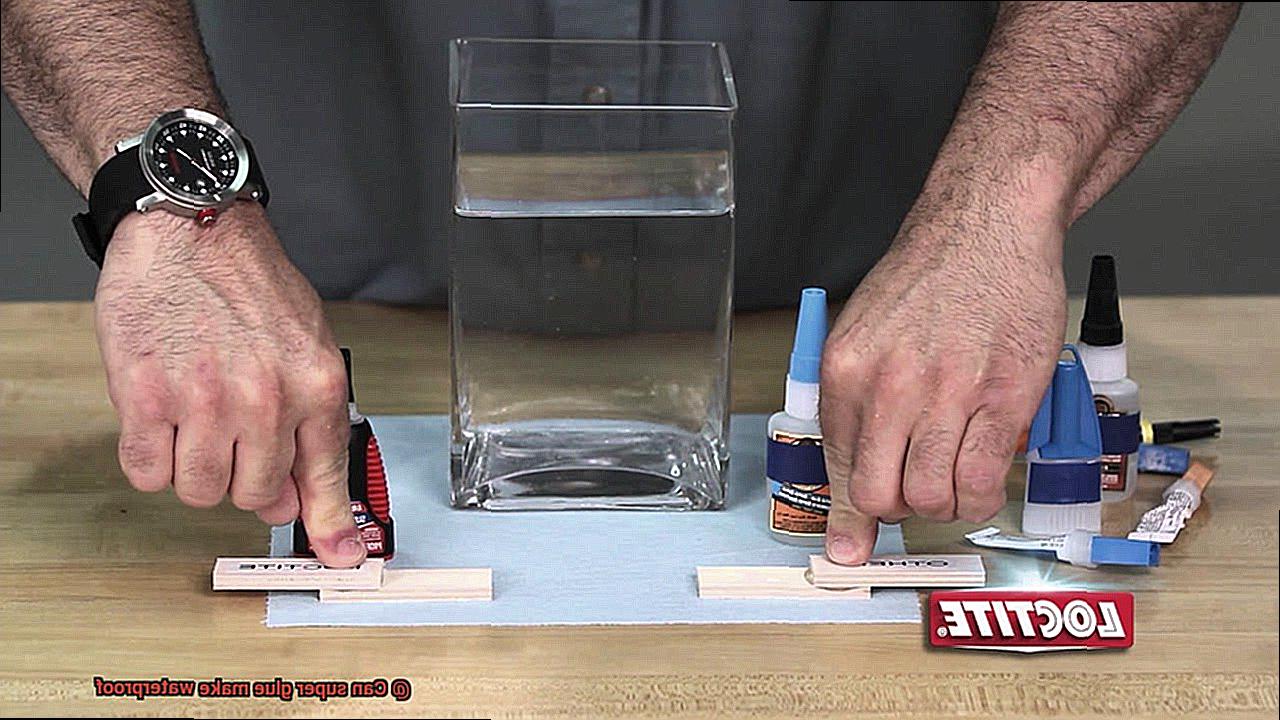
Cyanoacrylate Glue

The most common type of super glue is cyanoacrylate glue, which is known for its fast-drying properties. It forms a strong bond and works well on materials such as metal, plastic, rubber, and wood. However, it may not work well on porous surfaces or surfaces that are exposed to water. It is important to note that cyanoacrylate glue can cause skin irritation and should be used with caution.
Epoxy Glue
Epoxy glue is a two-part adhesive that is known for its waterproof properties. It can bond materials such as ceramic, glass, metal, and plastic. It is also resistant to water, heat, and chemicals. This type of super glue is ideal for outdoor applications or for bonding materials that are exposed to water. Epoxy glue takes longer to dry than cyanoacrylate glue, but it creates a stronger bond.
Specialty Super Glues
Specialty super glues are designed for specific purposes and materials. For example, there are super glues that are formulated for bonding rubber, metal, or plastic. These types of glue have specific properties that make them ideal for bonding those particular materials. Specialty super glues may also be designed for specific applications, such as gap-filling or high-strength bonding.
Waterproof Super Glues
Waterproof super glues are designed to create a water-resistant bond. These types of glue are ideal for outdoor use or for bonding items that will be exposed to water or moisture. Waterproof super glues can vary in strength and dry time, so it is important to choose the right one for your project.
High-Temperature Super Glue
High-temperature super glue can withstand extreme temperatures and is ideal for bonding materials such as metal or ceramics that are exposed to high heat. This type of super glue can create a strong bond that can withstand heat, but it may not work well on other materials. It is important to follow the manufacturer’s instructions when using high-temperature super glue.
Does Super Glue Make Items Waterproof?
While super glue is known for its strong adhesive capabilities, it may not always be the best solution for creating a waterproof seal. As an expert in this field, I’ve researched the topic and discovered that there are several factors to consider.
Firstly, it’s important to note that different types of super glue cater to specific needs. For example, outdoor use may call for waterproof super glue, while extreme heat exposure may require high-temperature super glue. When it comes to making items waterproof, not all types of super glue will necessarily hold up against larger amounts of water or prolonged exposure to moisture.
In fact, if a super glue bond is exposed to water for an extended period of time, it may begin to break down and lose its strength. However, some types of super glue are specifically formulated to be water-resistant or even waterproof. These types can be useful for certain applications, such as repairing items that will be exposed to water on a regular basis.
Ultimately, the effectiveness of using super glue to make items waterproof depends on several factors. Firstly, it depends on the specific type of glue being used.
Secondly, it depends on the item being repaired or sealed. It’s important to consider the level of exposure to water that the item will experience and any other factors that may impact the effectiveness of the super glue bond.
Factors That Affect the Waterproofing Ability of Super Glue
Firstly, let’s talk about the type of material you want to bond. Porous materials such as wood or paper can absorb moisture, making it challenging for super glue to create a completely waterproof seal. In contrast, non-porous materials like metal or plastic give super glue a better chance of creating a water-resistant bond. So, it’s essential to consider the material before applying super glue.
Secondly, the amount of glue applied is crucial. Using too little may result in gaps in the bond that allow water to seep through, while using too much can prevent a proper bond from forming. Finding the right balance is key to creating a strong bond that can resist water.
Thirdly, temperature and humidity during application can significantly impact the waterproofing ability of super glue. High humidity levels can slow down the curing process and lead to a weaker bond. Additionally, applying super glue in extremely cold temperatures can cause it to become brittle and less effective in creating a waterproof seal.
Lastly, the quality and type of super glue used can also affect its waterproofing ability. Higher quality super glue usually contains more rubberized components that increase its flexibility and resistance to water. Marine-grade or waterproof super glue is specifically designed for use in wet environments and offers better results when it comes to creating a water-resistant bond.
How to Apply Super Glue for Maximum Waterproofing
Applying super glue for maximum waterproofing is easier than you think. To achieve the best results, follow these five simple steps:
Step 1: Clean and Dry the Surface
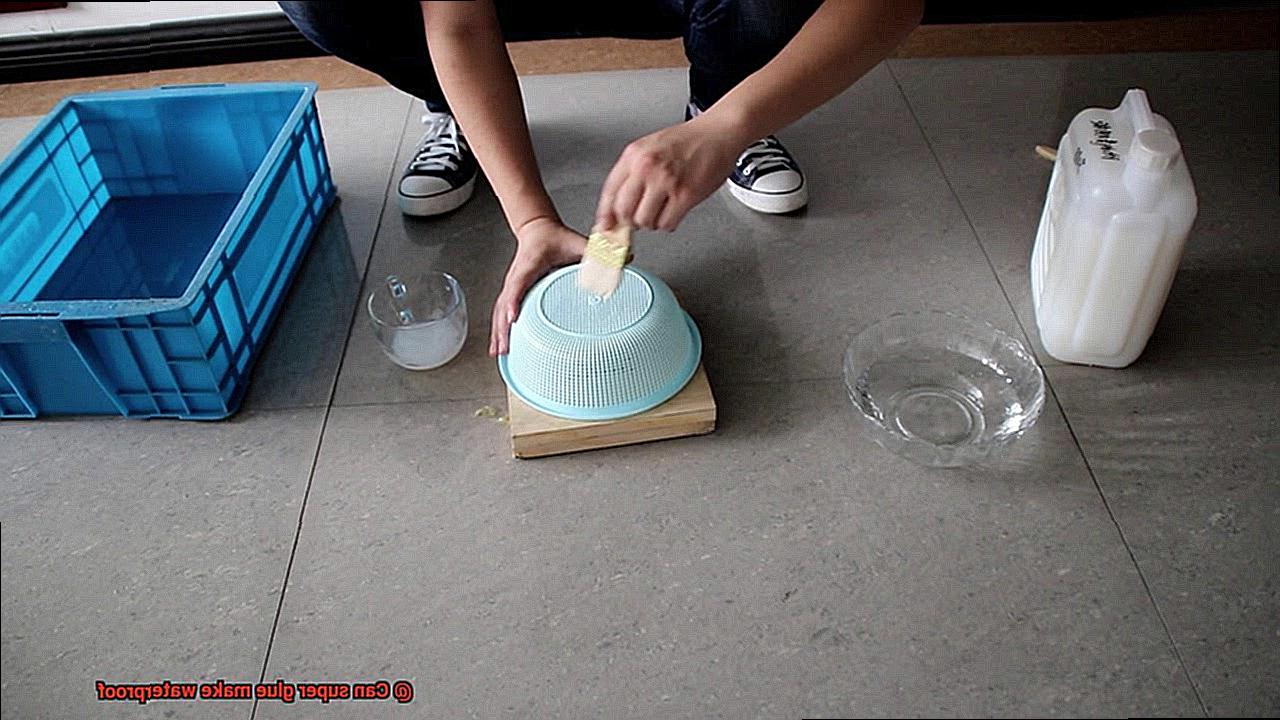
Before applying super glue, ensure that the surface is clean and dry. Any moisture or debris on the surface can weaken the bond and reduce its effectiveness. Use a damp cloth to clean the surface thoroughly and let it dry completely before proceeding.
Step 2: Apply a Small Amount of Super Glue
Less is more when it comes to super glue. Apply a small amount of glue to one of the surfaces you want to bond. Avoid over-saturating the surface with glue as this can cause it to run or create weak spots in the bond.
Step 3: Spread the Glue Evenly
To ensure that the entire surface is covered with glue, use a toothpick or small brush to spread it evenly. This will create a more even bond and maximize waterproofing.
Step 4: Press Surfaces Together Firmly
After spreading the glue evenly, press the surfaces together firmly for at least 30 seconds. Avoid moving the surfaces around too much during this time as it can weaken the bond. Firm pressure will help create a strong bond and maximize waterproofing.
Step 5: Allow Time for Drying
Allow the super glue to dry completely before exposing it to water or other liquids. Depending on the type of super glue you are using, this can take anywhere from a few seconds to several minutes. Be patient and avoid any movement that could disrupt the bond.
Benefits of Using Super Glue for Waterproofing
Look no further than super glue. This fast-drying and strong adhesive, also known as cyanoacrylate adhesive, is a game-changer when it comes to waterproofing. As an expert in this field, I can confidently say that super glue has numerous benefits that make it a popular choice for many DIY projects and professional applications.
One of the main benefits of using super glue for waterproofing is its effectiveness in sealing gaps and cracks. Its ability to penetrate into small spaces and create a tight seal prevents water from seeping through, making it an ideal solution for repairing leaky pipes, gutters, and other areas where water damage can occur.
Another benefit of using super glue for waterproofing is its impressive resistance to moisture. Unlike traditional adhesives that break down when exposed to water, super glue maintains its strength and bonding power even when submerged in water. This makes it an excellent choice for outdoor projects or applications where exposure to moisture is common.
In addition, super glue is incredibly easy to use and can be applied quickly with minimal mess. This convenient solution doesn’t require any special equipment or tools, making it perfect for emergency repairs or quick fixes. Its fast-drying formula means repairs can be completed quickly, minimizing downtime and reducing the risk of further damage.
But wait, there’s more. Let’s summarize the benefits of using super glue for waterproofing:
- It creates a water-resistant seal that prevents leaks and keeps water damage at bay.
- It’s resistant to moisture, making it a reliable choice for outdoor projects or applications where exposure to water is common.
- It’s easy to use and doesn’t require any special equipment or tools.
- Its fast-drying formula means repairs can be completed quickly, reducing downtime and preventing further damage.
Disadvantages of Using Super Glue for Waterproofing
Super glue is a popular household adhesive that is often used for waterproofing. However, it is important to consider the disadvantages of using super glue for this purpose before relying on it for a long-term solution.
Firstly, the bond created by super glue can weaken and break down when exposed to water or moisture for prolonged periods. This means that it may not be suitable for environments that are constantly exposed to water.
Secondly, super glue may not adhere well to certain materials commonly used in waterproofing applications, such as certain types of plastics or rubber materials. This can compromise the effectiveness of the waterproofing application and result in leaks or other issues.
Thirdly, removing super glue can be challenging and may cause damage to the materials being bonded. If applied incorrectly or if the bonded materials need to be separated, it can be difficult to remove the adhesive without causing further damage.
Finally, super glue can be toxic and potentially harmful if ingested or if it comes into contact with skin or eyes. It is essential to take proper precautions when using super glue for waterproofing and to ensure that it is used safely and responsibly.
Alternatives to Using Super Glue for Waterproofing
When it comes to waterproofing, super glue may seem like a convenient solution, but it’s important to remember that it has its limitations. Fortunately, there are other alternatives that could be more effective for your specific needs.
One such option is epoxy, a two-part adhesive that creates a strong and waterproof bond. Epoxy is perfect for sealing and bonding materials like metal, glass, and ceramics. It can even fill in gaps and cracks to prevent water from seeping through. This versatile adhesive is a great choice for those looking for a long-lasting solution.
If you need a more flexible option, silicone sealant is a great alternative to super glue. Unlike super glue, silicone sealant can withstand exposure to water without losing its adhesive properties or deteriorating. It remains flexible even after curing, making it ideal for sealing joints that may expand or contract due to changes in temperature or humidity. You can use silicone sealant on various surfaces such as metal, glass, and plastic.
For those who prefer natural alternatives, beeswax is an excellent option. You can melt beeswax and apply it to surfaces like leather, fabric, and wood to create a waterproof barrier. Beeswax is also non-toxic and eco-friendly, making it a great choice for those who want to avoid harsh chemicals.
8g2REE6z9V8″ >
Conclusion
To sum up, super glue can serve as a reliable adhesive for creating a water-resistant seal. However, its effectiveness in making items waterproof varies depending on several factors. The type of super glue utilized, the surface being bonded, and the application method all play significant roles in determining its ability to resist water. It’s worth noting that although some types of super glue are specifically formulated to be water-resistant or even waterproof, prolonged exposure to water can weaken the bond.
When using super glue for waterproofing purposes, it’s crucial to consider the material being bonded and how much exposure it will have to water. Applying an adequate amount of glue evenly and allowing sufficient drying time are also essential steps to achieve maximum waterproofing.
Despite its benefits such as sealing gaps and cracks quickly and easily, super glue has some drawbacks. Its bond can break down when exposed to water for prolonged periods, and removing it can be challenging without causing damage.
For specific needs and long-term solutions, alternatives such as epoxy or silicone sealant may provide more effective results.


